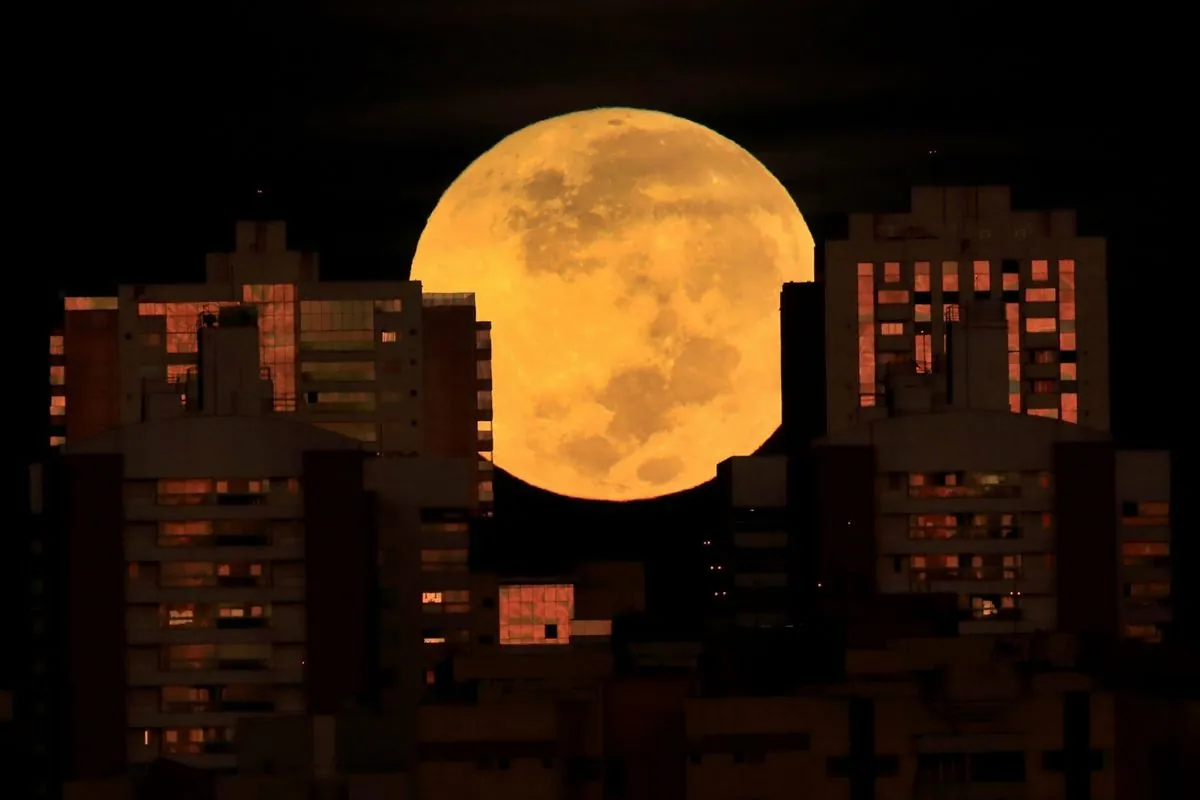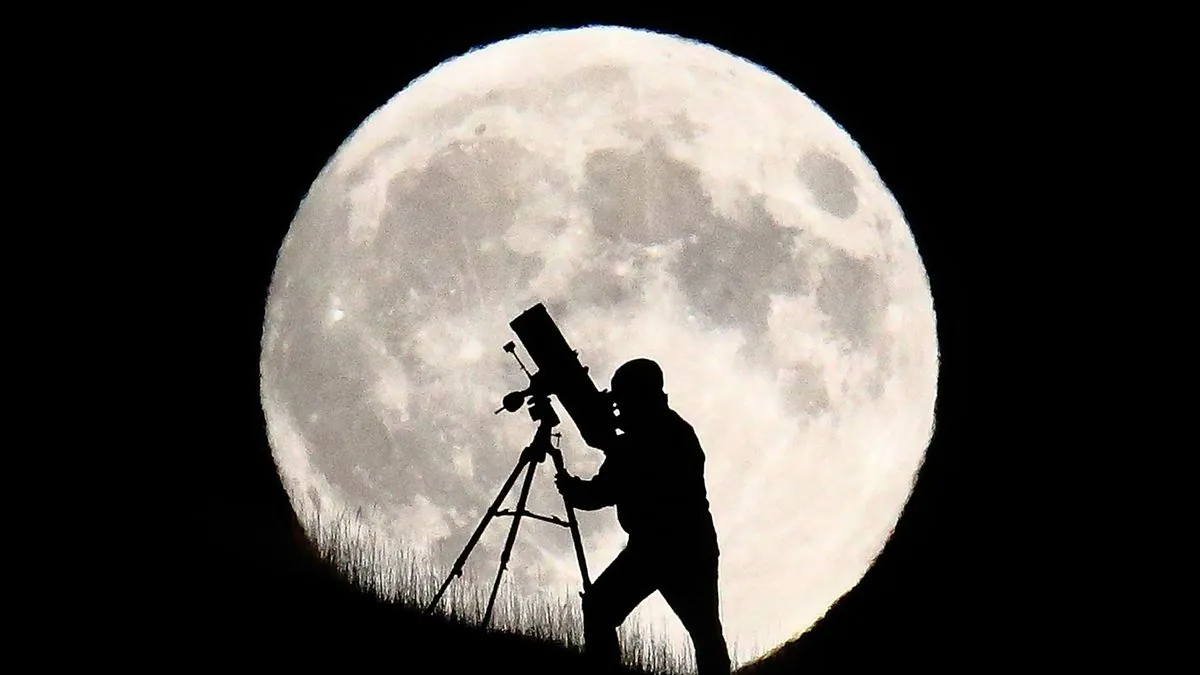Rare Supermoon Partial Eclipse: A Celestial Spectacle Awaits Stargazers
A rare partial lunar eclipse coinciding with a supermoon will grace the night sky. Viewers can witness this celestial event from September 17-19, with peak visibility on Tuesday night.

Astronomy enthusiasts are in for a treat as a rare celestial event unfolds in the night sky. A partial lunar eclipse coinciding with a supermoon will be visible from September 17-19, 2024, offering a unique spectacle for stargazers worldwide.
The phenomenon will begin on Tuesday evening, September 17, as Earth's shadow gradually obscures a portion of the moon's surface. NASA has provided a detailed timeline for observers in the Eastern Time Zone:
- 8:41 PM: Moon enters Earth's partial shadow
- 10:13 PM: Top edge of the moon enters full shadow
- 10:44 PM: Peak eclipse (8% of moon in full shadow)
- 11:16 PM: Moon exits full shadow
- 12:47 AM (Sept 18): Moon exits partial shadow
For viewers in the United Kingdom, the event will occur in the early hours of September 18, with the partial eclipse reaching its maximum at 3:44 AM.
To optimize your viewing experience, experts recommend finding a dark location with an unobstructed eastern view. Avoid areas with excessive artificial lighting or tall structures that might impede visibility.

This supermoon is also known as the Harvest Moon, being the closest full moon to the autumnal equinox. Historically, its bright light aided farmers in harvesting crops after sunset, earning it the moniker "corn moon" among Native Americans.
"A supermoon occurs when the moon's orbit is closest (perigee) to Earth at the same time the moon is full."
The Moon's elliptical orbit brings it closer to and further from Earth, with the average distance being about 238,855 miles (384,400 km). During a supermoon, it can appear up to 14% larger and 30% brighter than a micromoon, which occurs at the farthest point in its orbit.
Interestingly, the Moon is gradually moving away from Earth at a rate of about 1.5 inches (3.8 cm) per year. Despite this, its gravitational pull continues to influence Earth's ocean tides significantly.
For those who miss this event, two more supermoons are scheduled for October 17 and November 15, 2024. These occurrences are relatively common, happening 3-4 times annually on average.
It's worth noting that while the Moon plays a crucial role in Earth's natural cycles, its own environment is starkly different. With no atmosphere or liquid water on its surface and only 1/6th of Earth's gravity, the Moon presents a challenging landscape for exploration.
Since Neil Armstrong's historic first steps in 1969, the Moon has captivated human imagination. As the fifth largest natural satellite in our solar system, with a diameter about 1/4 that of Earth, it continues to be a subject of scientific study and potential future missions.
This celestial event serves as a reminder of the Moon's enduring influence on Earth and its ability to inspire wonder in observers across generations.


































